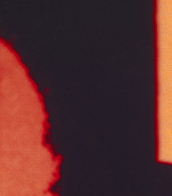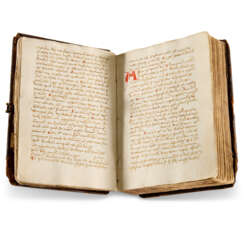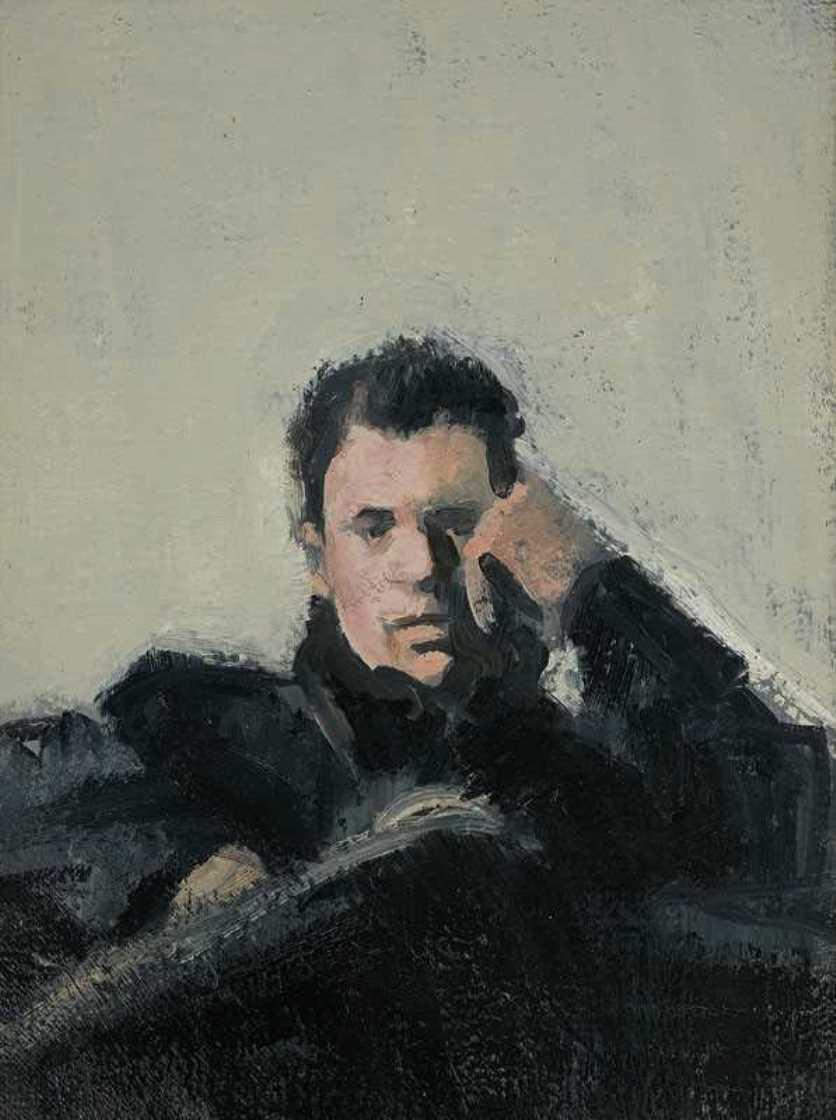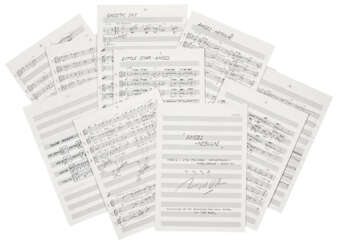Scotland — Auction price

Caroline Walker is a Scottish-born contemporary visual artist based in London. She is known for voyeuristic paintings of women working.

Douglas Gordon is a Scottish artist. He won the Turner Prize in 1996, the Premio 2000 at the 47th Venice Biennale in 1997 and the Hugo Boss Prize in 1998. He lives and works in Berlin, Germany.
Much of Gordon's work is seen as being about memory and uses repetition in various forms. He uses material from the public realm and also creates performance-based videos. His work often overturns traditional uses of video by playing with time elements and employing multiple monitors.


Caroline Walker is a Scottish-born contemporary visual artist based in London. She is known for voyeuristic paintings of women working.


Nigel Osborne is a British composer, educator and humanitarian activist.
He studied composition at Oxford and in Warsaw. In Poland he co-founded one of the first live electronic performance groups in Eastern Europe and worked in the Experimental Studio of Polish Radio, beginning a special relationship with electroacoustic music throughout Europe.
Nigel Osborne works extensively in long-term collaborative projects, for example with the Vienna 20jh Ensemble, the London Symphonietta, the Nash Ensemble, the Scottish Chamber Orchestra and others. Theater productions have always been an important area for him. Among the major works for the theater is an interesting opera "Electrification of the Soviet Union". His series of musical and dance collaborations - "Apollo in Despair", "Wilderness", "Zanza", "Mythologies", and in opera and musical theater - "Hell's Angels", "Faust" and others are known.
Osborne's major orchestral works include Symphony 1 for the BBC Symphony Orchestra and Sun of Venice for the Philharmonic Orchestra. Osborne is a full-time professor at the University of Edinburgh and an advisor to War Child, the charity responsible for the humanitarian aid program in Bosnia and Herzegovina. He is generally known for his extensive charity work supporting children traumatized by war, particularly in the Balkans during the Bosnian War and in the Syrian conflict, using his own music therapy techniques.


Caroline Walker is a Scottish-born contemporary visual artist based in London. She is known for voyeuristic paintings of women working.


Caroline Walker is a Scottish-born contemporary visual artist based in London. She is known for voyeuristic paintings of women working.


Caroline Walker is a Scottish-born contemporary visual artist based in London. She is known for voyeuristic paintings of women working.


Caroline Walker is a Scottish-born contemporary visual artist based in London. She is known for voyeuristic paintings of women working.


Robert Louis Stevenson, born Robert Lewis Balfour Stevenson, was a Scottish poet and writer, a major exponent of Neo-Romanticism.
He began studying engineering at the University of Edinburgh, but later began to study law. However, he was fascinated by literature, and already during his studies the student printed in periodicals. Stevenson was an avid traveler and also published several books about his travels. In 1881, he began serializing pirate stories, which were formalized into a book, Treasure Island, in 1883. The book became an instant bestseller. Next were adventure novels "Kidnapped" (1886), "The Strange Case of Dr. Jekyll and Mr. Hyde" (1886), "The Master of Ballantrae" (1889) and others, as well as many novels and short stories, ballads.
Robert Lewis Stevenson was very sickly from early childhood, and readers would not have guessed that he wrote his most exciting adventures while nearly bedridden. He died at the age of 44 from a cerebral hemorrhage. And Treasure Island remains one of the greatest and most popular adventure novels in the English language. It has been translated, reprinted and screened around the world many times.


Alberto Sangorski is a British artist, illustrator, calligrapher and bookbinder.
As a young man, Alberto showed promise as a painter, but began working as a secretary for a jewelry firm in the City of London. When his younger brother Francis Sangorski founded the bookbinding firm of Sangorski & Sutcliffe in London in 1901, Alberto often visited the workshop and helped the firm with its bookkeeping. Around 1905 he became interested in this work and after a little technical training from his brother, he became an accomplished calligrapher and illustrator.
The firm of Sangorski & Sutcliffe was known in the 1920s for its luxurious gem-embellished bindings, with real gold and gemstones used in the covers. This bindery was considered the leading bindery in London and was highly successful, surviving both wars and economic depressions.

Robert Burns (Gaelic: Raibeart Burns or Rabbie Burns) was a Scottish poet, folklorist, and bard.
The hard farm life of his father significantly influenced Robert's outlook. Education of the novice poet received a sketchy, reread all English writers, knew Latin and French. In time, he became an opponent of the social order of his time and a satirist of all forms of religious and political thought that lead to inhumanity.
Burns' first book, entitled Poems, mostly in the Scottish dialect, was published in 1786. It was well received by the public, and the elated author traveled to Edinburgh, where he met James Johnson, a keen collector of Scottish songs. Together they produced a book, The Scottish Musical Museum. This and a similar book, George Thomson's Selected Collection of Original Scottish Songs for Voice (1793-1818), contain the bulk of Burns' songs.
Robert Burns was torn between his farming background and the much higher status of many of the intellectuals with whom he socialized and corresponded closely. Although he obtained a position in the excise office, this did little to satisfy the ambitions of the somewhat naive poet.
Having gained a reputation as a writer of poems and songs in Scottish and English, Burns went on to collect and adapt Scottish folk songs and created one of his major works, Tam of Shanter (1791), a narrative poem based on a folk legend. Even today Burns is honored as Scotland's national poet and is considered a pioneer of the Romantic movement in England.


William Jardine was a Scottish naturalist, ornithologist, ichthyologist, artist and publisher of works on zoology.
Jardine studied medicine at the University of Edinburgh and was an excellent sportsman. Although his main passion was ornithology, he also studied ichthyology, botany and geology. Sir William Jardine was a prominent Scottish Victorian naturalist, author and publisher of 40 volumes of the popular Naturalist's Library (1833-43). Of these, 14 volumes were devoted to ornithology, 13 volumes to mammals, 7 volumes to entomology, and 6 volumes to ichthyology.
A series in four volumes, Illustrations on Ornithology, co-written with Prideaux John Selby, was published between 1825 and 1843. His book on burrows and fossil tracks, The Ichnology of Annandale, includes fossils from his ancestral estate. Jardine was a leading expert on salmon and trout in the British Isles. His outstanding knowledge of the species was profound that in 1860 he was appointed a member of the Royal Commission on the Salmon Fisheries of England and Wales. His research culminated in the best and most comprehensive monograph on these fish, "British Salmonids," with the remarkable illustrations by Jardine himself. William Jardine's private natural history museum and library are considered the finest in Britain.















































